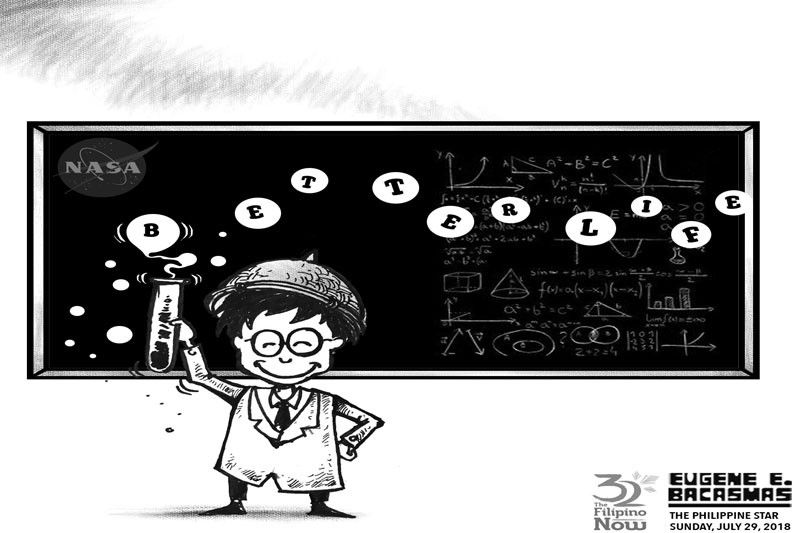EDITORIAL - Science for a better life

The United States’ National Aeronautics and Space Agency drew considerable interest during the recent National Science and Technology Week exhibit organized by the Department of Science and Technology. NASA is working with the DOST, Ateneo de Manila University’s Manila Observatory and the Philippine Atmospheric, Geophysical and Astronomical Services Administration on a $20-million partnership to better understand cloud formation in the western part of the country.
Like much of the world, Filipinos are familiar with the space exploration projects of NASA. A decade of collaboration between the two countries is contributing to heightened interest in the Philippines, especially among the youth, in scientific pursuits and innovation projects.
Advanced economies invest heavily in scientific and technological pursuits, aware that innovation is the key to survival and success in a globalized environment. In contrast, interest in the Philippines in the sciences and, relatedly, mathematics, still leaves much to be desired. Education Secretary Leonor Briones has also cited the lack of science and mathematics professors as a problem in the public education system.
The government has a “Balik-Scientist” program that offers incentives to Filipino scientists working overseas to work in their own country. Relevant agencies have reported some success in the program.
As important as luring back Filipino scientists working overseas, however, is developing interest in the sciences in this country at a young age. School curricula can be enhanced in this regard. More programs can also be developed to encourage high school students to consider pursuing careers related to the sciences and mathematics.
Science and technology can empower communities, ease poverty and improve the quality of life. The most competitive countries pour resources into scientific and technological innovation. Scientific pursuits deserve more emphasis in national life.
- Latest
- Trending
























